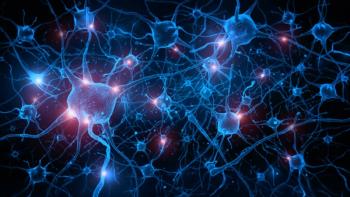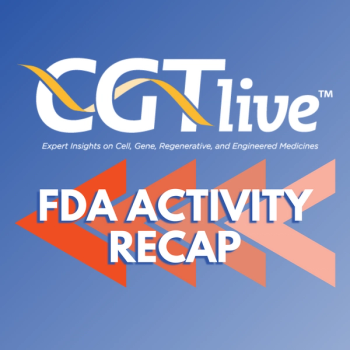
10-Year Data Show Allogeneic Stem Cell Transplant Benefits for Sickle Cell Anemia
A long-term follow-up to the DREPAGREFFE-1 trial suggest that children with sickle cell anemia may benefit long-term on risk of cerebral injury, cognitive functions, and quality of life over standard care transfusions.
Data from the DREPAGREFFE-2 study (NCT05053932) suggest that there are significant differences between allogeneic stem cell transplantation (allo-SCT) and standard of care after 10 years for patients with sickle cell anemia, with allo-SCT showing better prevention of silent cerebral infarcts (SCIs) and decreases in social quality of life, working memory, and processing speeds.1
The study was a follow-up to the prospective DREPAGREFFE-1 trial (NCT01340404), which previously reported results from 1 and 3 years.2,3 These new data were presented by Françoise Bernaudin, MD, the head of the Referral Center for Sickle Cell Disease and Clinical Research Department at Hôpital Intercommunal de Créteil of the Université Paris-Est, at
“In children with [a] history of abnormal velocities detected by transcranial or cervical Doppler [ultrasound], allogeneic transplantation is more effective than chronic transfusion in reducing stenosis score,” Bernaudin said in her presentation. “This confirms the importance of complete suppression of sickle cell erythropoiesis by allogeneic transplantation.”
“Transplantation was also more effective than hydroxyurea or chronic transfusion in reducing the incidence of hospitalization in vaso-occlusive crises, in preventing the incidence of silent infarcts, and in improving quality of life, and working memory and processing speed index in cognitive tests,” she said.
The MRI and MRA revealed that after 10 years, of the 31 standard of care group patients, 11 had reported SCIs—an increase of 5 incidences from 6 at enrollment—while there were no additional instances in the 28 patients in the allo-SCT group, which had 12 at enrollment. SCI were either no more visible or under 3 mm in 1 patient in the standard of care group and 4 in the allo-SCT group (P = .010).
READ MORE:
When comparing the cognitive testing among 24 patients in the allo-SCT group and 21 in the standard of care group—done with the Weschsler Intelligence Scale For Children Fifth Edition (WISC-V) and Wechsler Adult Intelligence Scale Fourth Edition (WAIS-IV)—the mean difference in working memory index (WMI) was higher for the allo-SCT group (89.6; SD, 11.8) compared with the standard of care group (80.5; SD, 10.8; P = 0.21) with a digit span of 8.4 (SD, 1.9) vs 6.7 (SD, 1.8) which was significant (P = .005). There was no difference in verbal comprehension and perceptual reasoning index.
Processing speed index (PSI) was higher for the allo-SCT group at 96.5 (SD, 21.9) compared with the standard of care group at 83.7 (SD, 14.4), which was significant (P = .035), with a symbol search of 9.3 (SD, 2.0) vs 7.3 (SD, 2.9; P = .021), respectively.
Compared with the measures at enrollment, the mean WMI and PSI improved at 10 years in allo-SCT patients (+5.8 [SD, 15.6] vs. +9.0 [SD, 25.4]) but not in the standard of care patients (–2.0 [SD, 15.7] vs +0.6 [SD, 19.7]), although it was not significant.
The available mean quality of life measures at 10 years in allo-SCT group (n = 25) was not different from the standard of care group (n = 28) for the emotional domain, but was higher for the physical (allo-SCT: 84.0 [SD, 16.3]; standard of care: 76.4 [SD, 11.2]; P = .013), school (allo-SCT: 72.6 [SD, 17.2]; standard of care: 61.4 [SD, 14.7]; P = .016) and social functioning (allo-SCT: 93.8 [SD, 10.7]; standard of care: 86.4 [SD, 12.9]; P = .003).
When including the 3 haplo-SCT with the alloSCT-arm for 10-year analysis, hemoglobin and HemoglobinA percentages were higher, while sickle cell hemoglobin percentage, reticulocytes, white blood cells, neutrophil, bilirubin, lactate dehydrogenase, and ferritin were significantly lower in the allo-SCT vs standard of care arm (P<.001 for all).
“This encourages early [allogeneic] stem cell transplantation for sickle cell anemia children with matched sibling donor and abnormal cerebral velocities or severe baseline hemolytic anemia—[which is] known to be a risk factor for cerebral vasculopathy—or crises of complication despite hydroxyurea treatment,” Bernaudin said. For those without a matched sibling donor, Bernaudin said that patients could be considered for haploidentical stem cell transplantation if they have worsening or persistent cerebral vasculopathy, while gene therapy could also be considered for those whose disease is progressing.
For more coverage of ASH 2024,
REFERENCES
1. Bernaudin F, Verlhac S, Ducros-Miralles E, et al. Outcome of Cerebral Vasculopathy and Cognitive Performances 10 Years Post-Enrollment in the Drepagreffe Trial Comparing Allogeneic Stem Cell Transplantation to Standard-Care in Children with Sickle Cell Anemia and History of Abnormal Cerebral Velocities. Presented at: ASH 2024 Annual Meeting. December 7-10, 2024; San Diego, CA. Abstract LBA-5
2. Bernaudin F, Verlhac S, Peffault de Latour R, et al. Association of Matched Sibling Donor Hematopoietic Stem Cell Transplantation With Transcranial Doppler Velocities in Children With Sickle Cell Anemia. JAMA. 2019;321(3):266-276. doi:10.1001/jama.2018.20059
3. Verhlac S, Gabor F, Paillard C, et al. Improved stenosis outcome in stroke-free sickle cell anemia children after transplantation compared to chronic transfusion. BJ Haem. 2021;193(1):188-193. doi:10.1111/bjh.17178
Newsletter
Stay at the forefront of cutting-edge science with CGT—your direct line to expert insights, breakthrough data, and real-time coverage of the latest advancements in cell and gene therapy.










































